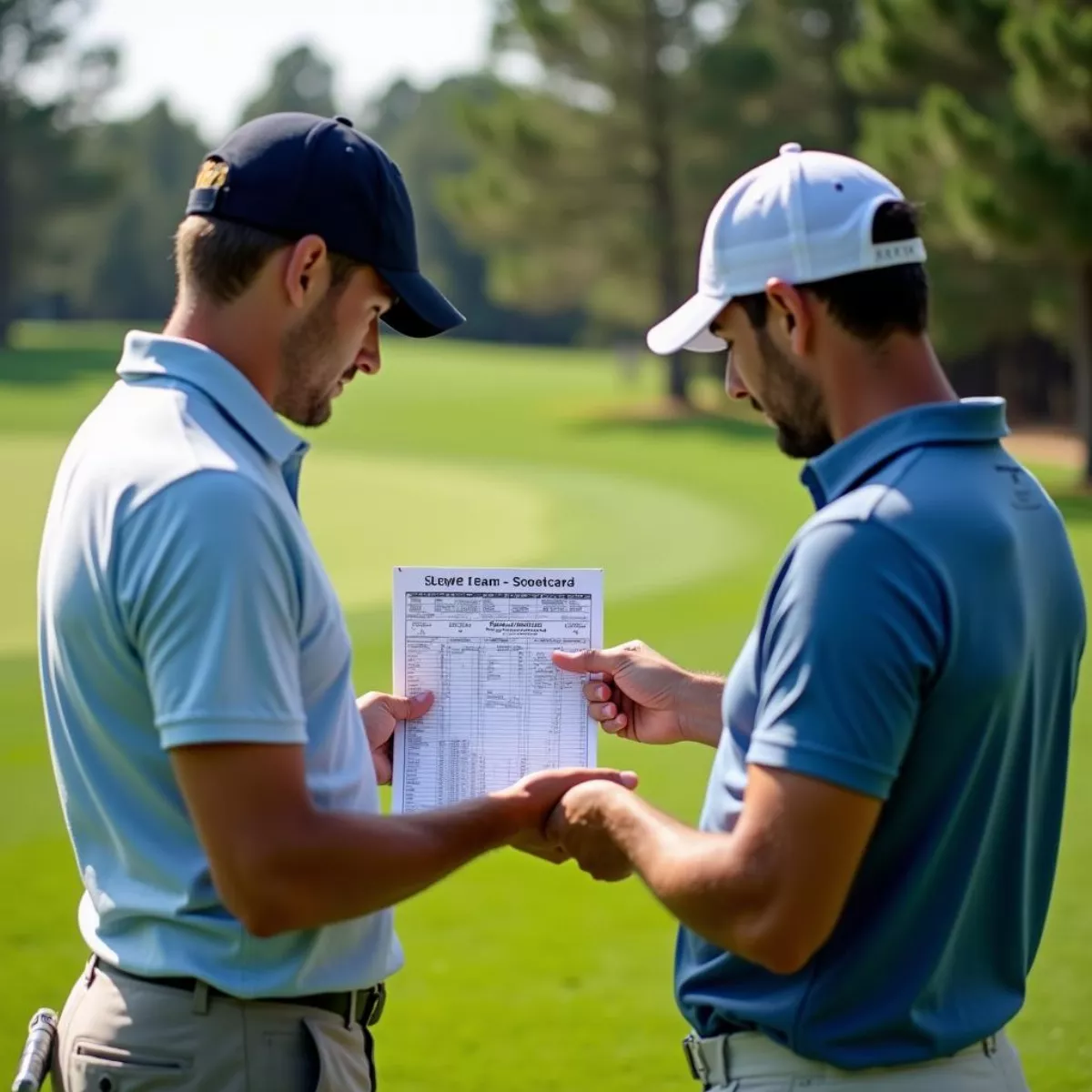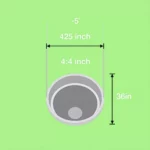Golf can sometimes feel like a game wrapped in mystery. The terms tossed around by players, such as slope and rating, often leave newcomers scratching their heads. So let’s break down these concepts to clarify their significance and ensure you hit the course informed and ready to play!
What are Slope and Rating?
Before we dive deeper, let’s define the two terms clearly:
- Slope: This refers to the measure of difficulty for the average golfer compared to a scratch golfer on a specific golf course. It quantifies how much harder a course is for a bogey golfer (someone with a higher handicap).
- Course Rating: This is a number that indicates the expected score for a scratch golfer (a golfer with a 0 handicap). Essentially, it tells you what a player with a pristine game should average on that course under normal playing conditions.
Understanding how these two metrics work can dramatically impact how you approach each golf course.
 Golf Course with Flags
Golf Course with Flags
The Importance of Slope and Rating
Slope and Rating serve as vital tools in determining your potential score and understanding your golfing prowess on different courses. Let’s dive deeper into their individual characteristics.
Slope: Breaking it Down
- Scale: Slope is measured on a scale from 55 to 155. A higher slope rating indicates a more challenging course for the average golfer.
- Calculation: Slope is calculated using the formula:
[
text{Slope} = left(frac{text{Course Rating} – text{Bogey Rating}}{113}right) times 5
]
This highlights the difference between scoring expectations for scratch golfers versus higher-handicap players. - Example: For instance, if a golf course has a Course Rating of 70 and a Bogey Rating of 90, the Slope would be about 131. This means the course is significantly tougher for average players.
Course Rating: The Fine Print
- What is it?: A Course Rating typically ranges from 67 to 75.5. This number represents the expected score for a scratch golfer under average conditions, which consists of factors such as yardage, hazards, and green complexity.
- Why it Matters: A lower course rating indicates an easier course to navigate for scratch golfers, while a higher rating suggests challenges around every corner.
- Example: If you see a course rated at 72, a scratch golfer can expect to score near that number, assuming good weather and normal course conditions.
 Golfer Putting on Challenging Green
Golfer Putting on Challenging Green
How Slope and Rating Affect Your Game
Understanding slope and rating can help you strategize more effectively when selecting courses or assessing your own game progress. Here are the implications:
- For Beginners: A higher slope rating means that a course will likely be more difficult for beginner players than for experienced ones.
- For Experienced Golfers: A lower course rating allows experienced players to gauge if a course may be a good challenge for honing their skills.
Why You Should Check Slope and Rating Before Playing
Incorporating slope and rating into your game strategy can improve your performance. Here’s how:
- Selecting Courses: Knowing the slope and rating can help you pick appropriate courses that match your skill level.
- Anticipating Scores: These metrics help gauge the expected scores you might face, allowing for better game planning and realistic expectations.
- Course Challenges: Understanding these two terms can prepare you mentally for the challenges awaiting you on the course.
Comparing Slope and Rating
| Feature | Slope | Course Rating |
|---|---|---|
| Definition | Difficulty measure for a bogey golfer | Expected score for scratch golfers |
| Scale | 55 to 155 | 67 to 75.5 |
| Implication | How hard the course is for average players | Measures overall difficulty for elite players |
| Purpose | To level the playing field | To estimate scoring potential |
 Golfers Discussing Scorecard on Course
Golfers Discussing Scorecard on Course
Key Takeaways
- Slope measures the challenge for average golfers relative to scratch golfers.
- Course Rating indicates the expected score for a scratch golfer.
- Higher slope means more difficulty, while course rating reflects expected performance.
- Understanding these concepts helps players select courses and set realistic scoring expectations.
Frequently Asked Questions (FAQ)
1. How do I find the slope and course rating for a golf course?
Most golf courses will display their course rating and slope on their scorecards or official websites.
2. Does a higher slope rating mean the course is easier or harder?
A higher slope rating indicates that the course is harder for an average golfer compared to a scratch golfer.
3. Can I use my handicap to understand my performance?
Absolutely! Your handicap essentially indicates your potential ability and can be compared to the slope and course rating to evaluate performance expectations.
4. What is an average slope rating?
The average slope rating for a golf course is around 113, which is considered the standard.
5. How does weather affect slope and course rating?
Weather conditions can influence playability but do not change the slope or course rating. However, they can alter your actual scoring on that day.
6. Can slope and course rating help me improve my game?
Yes! By understanding which courses have a lower slope and rating, you can better tailor your practice and target areas needing improvement.
7. What if I play on a course with different conditions?
While scores may vary due to weather and course conditions, slope and rating are designed for normal conditions and offer a baseline for performance expectations.
8. How often is course rating and slope updated?
Golf courses typically review their ratings every few years, especially after major renovations or changes in design.
9. Are slope and course rating the same around the world?
While many countries use similar systems, specific calculations might vary based on local golfing regulations.
10. Is knowing my course rating useful if I mostly play on the same courses?
Yes! Understanding your performance in relation to that course’s rating can help track improvement over time.
Conclusion
By understanding the difference between slope and rating, you can enhance your overall golfing experience. Whether you’re picking a new course or monitoring your performance progress, knowing how these metrics work is invaluable. They are not merely numbers but tools that empower your game.
So, the next time you’re out on the course or preparing for a round, take a moment to consider the slope and course rating. You might just find yourself playing smarter—and enjoying the game even more!

